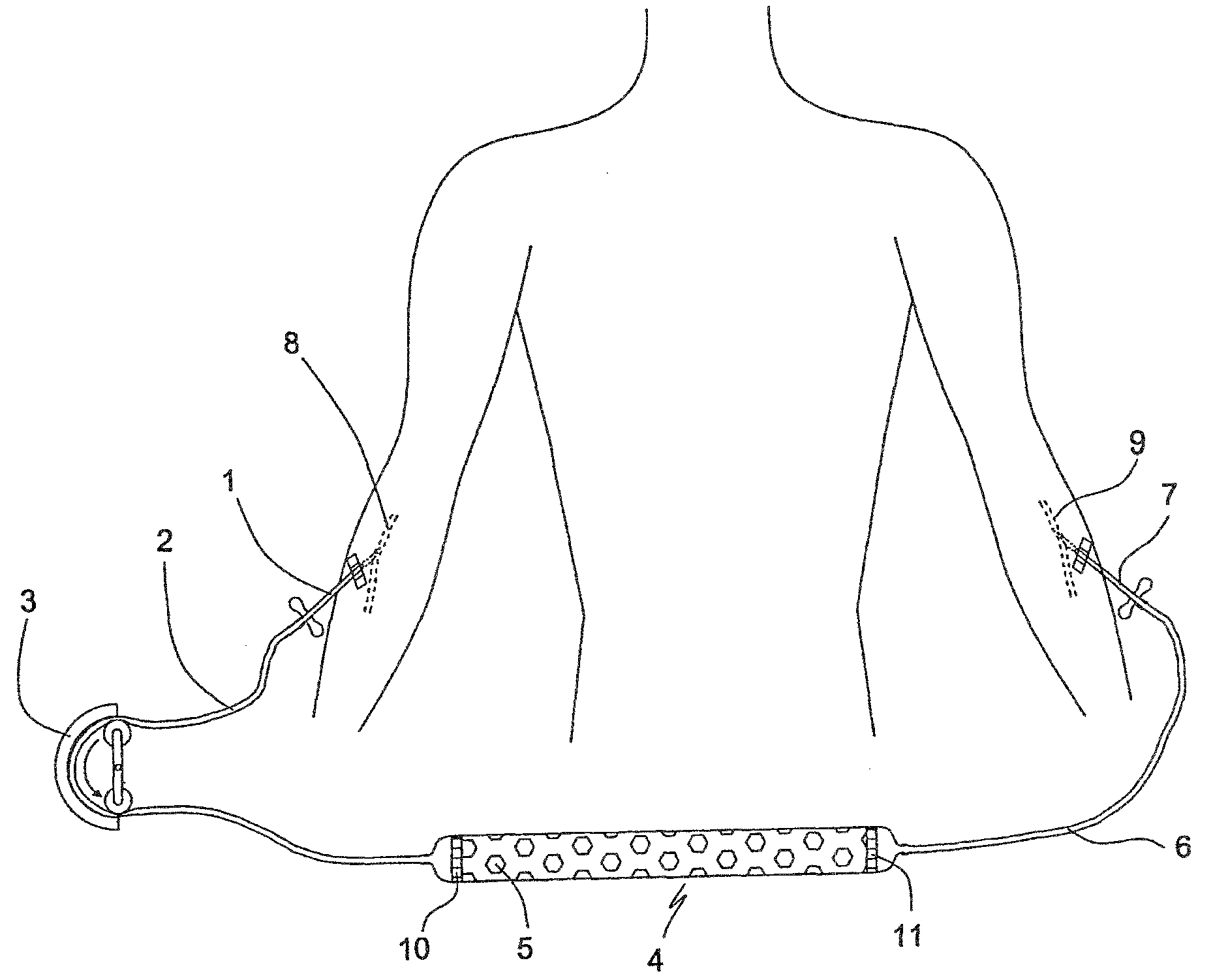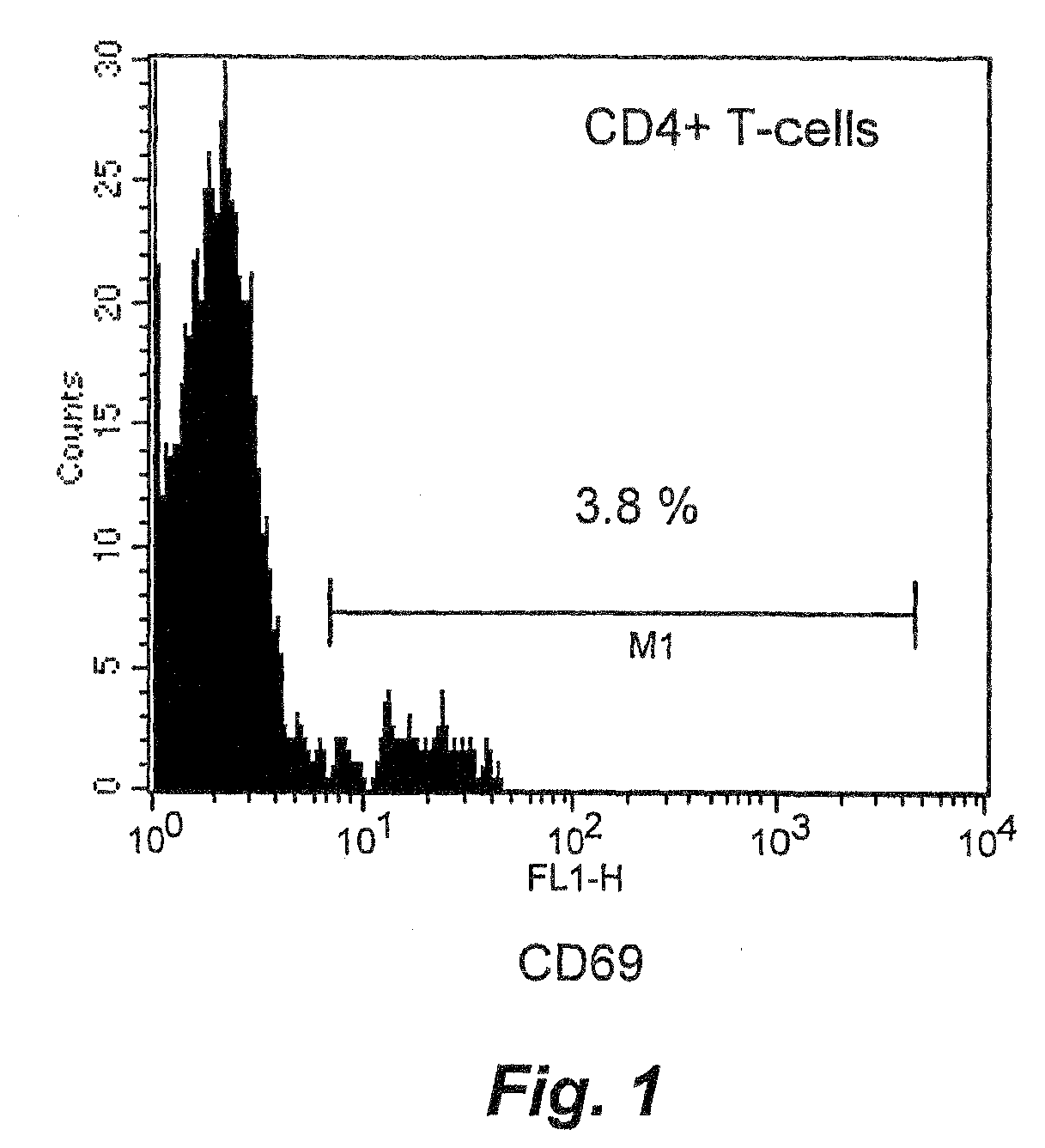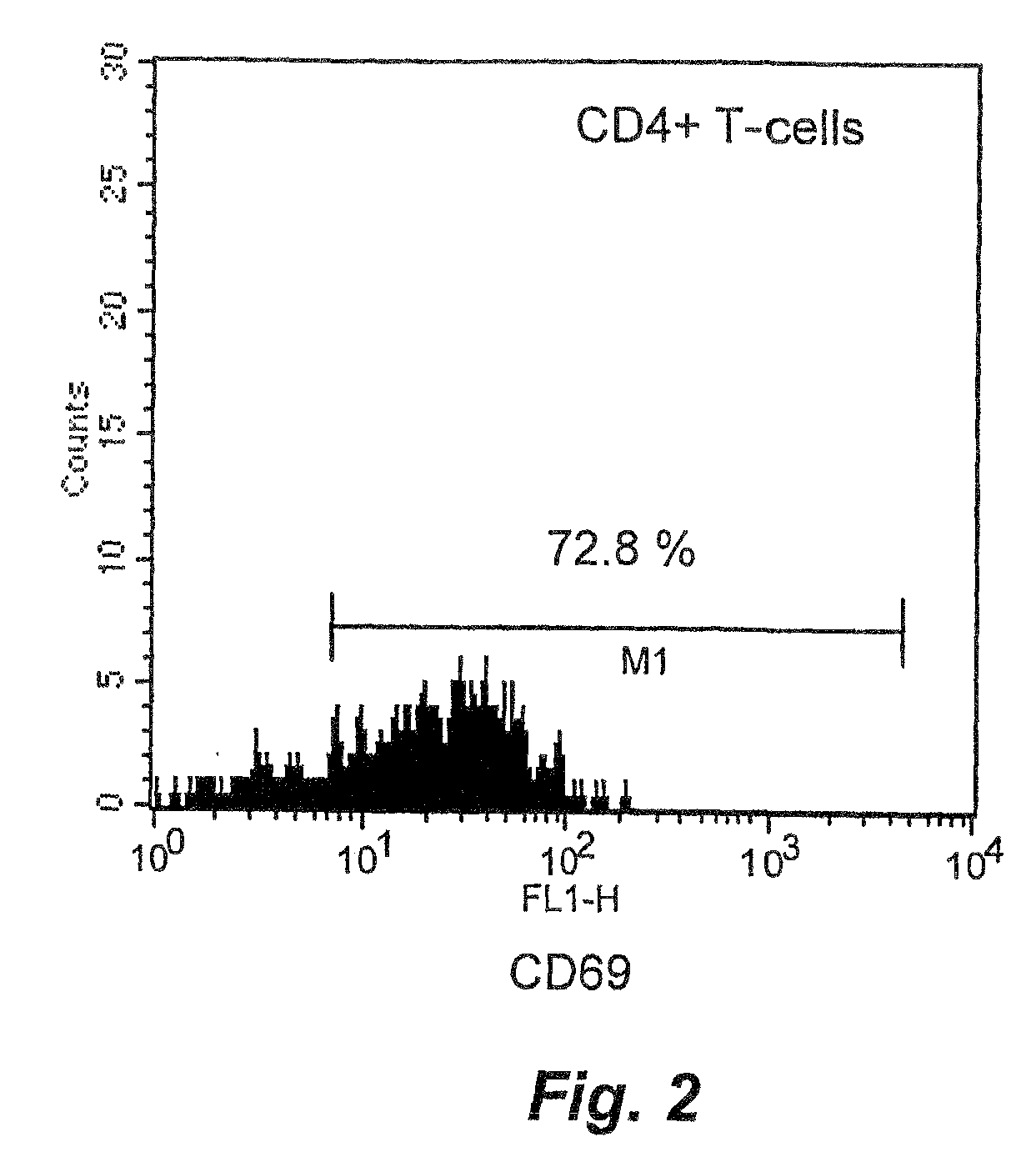Method and means for treating inflammatory bowel disease
a technology for inflammatory bowel disease and bowel disease, which is applied in the field of treating inflammatory bowel disease, can solve problems such as damage to intestinal cells, and achieve the effect of destroying or even inhibiting the additional recruitment of gut autoreactive t cells
- Summary
- Abstract
- Description
- Claims
- Application Information
AI Technical Summary
Benefits of technology
Problems solved by technology
Method used
Image
Examples
example 1
[0032]MACS separation. Two mL of heparinised peripheral blood from a healthy donor was stimulated with SEB (4 μg / mL) and anti-CD28 monoclonal antibody (10 μg / mL) for 2 hours in 37° C. to obtain activated T cells and neutrophil granulocytes. In order to get a mixed population of activated and resting cells, 2 mL of non-stimulated blood was subsequently added. Leukocytes were fixed, and erythrocytes were removed by hypotonic lysis. The leukocytes were washed and incubated with FITC-conjugated anti CD69 or CD66b. After 10 minutes of incubation in 4° C. in the dark, the cells were washed and incubated for another 15 minutes with anti-FITC microbeads. The cells were separated on a MACS column; both the negative and the positive fractions were collected in different tubes. Finally, the cells were washed and analysed by FACS.
example 2
[0033]IBD patients have activated CD4+ T cells in peripheral blood and in the intestine. We investigated single cell suspensions from blood and intestinal colon biopsies from 10 patients with Mb Crohn and 12 patients with ulcerative colitis. Patients with IBD display CD4+ T cells in peripheral blood with an activated phenotype, since T helper cells expressing the very early activation marker were found (FIG. 1). In colon biopsies from IBD patients the majority of the CD4+ T cells express the CD69 activation marker as a sign of inflammatory T cell response accumulated in the intestinal wall of the colon responsible for the autoimmune destruction of the colon (FIG. 2). The activated T cells found in peripheral blood are likely T cells that have been activated in an intestinal lymph node draining the inflammatory colon segment, and these cells are on route to the inflammation, a population of cells that should be eliminated.
example 3
[0034]IBD patients have activated neutrophil granulocytes in peripheral blood and in the intestine. Neutrophil granulocytes are a part of the innate immune system and take part in the activation and maintenance of the local inflammation. In peripheral blood from patients with IBD the majority of neutrophil granulocytes express low amounts of CD66b, however a fraction of the neutrophil granulocytes express high amounts of CD66b indicating an activated phenotype (FIG. 3). A substantial portion of the neutrophil granulocytes from colon biopsies from patients with active IBD are CD66bHi (FIG. 4), demonstrating an activation of the innate immune system likely involved in triggering the intestinal inflammation.
PUM
| Property | Measurement | Unit |
|---|---|---|
| Time | aaaaa | aaaaa |
| Volume | aaaaa | aaaaa |
Abstract
Description
Claims
Application Information
 Login to View More
Login to View More - R&D
- Intellectual Property
- Life Sciences
- Materials
- Tech Scout
- Unparalleled Data Quality
- Higher Quality Content
- 60% Fewer Hallucinations
Browse by: Latest US Patents, China's latest patents, Technical Efficacy Thesaurus, Application Domain, Technology Topic, Popular Technical Reports.
© 2025 PatSnap. All rights reserved.Legal|Privacy policy|Modern Slavery Act Transparency Statement|Sitemap|About US| Contact US: help@patsnap.com



